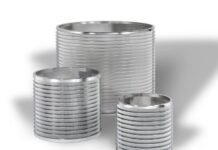Heidelberg is cautiously optimistic as it embarks on the financial year 2022/23. The Group’s order backlog of around Euro 900 million as of 31 March 2022 is the highest in ten years. Like all production companies, however, Heidelberg is facing some sharp increases in material, energy, logistics, and staffing costs that are likely to result in price adjustments. Thanks to substantial efficiency improvements resulting from the package of measures in recent years, the company is nevertheless confident of improving sales from Euro 2.18 billion to around Euro 2.3 billion in the financial year 2022/23 and increasing the Ebitda margin to at least 8%.
The Group is benefiting from growth initiatives focusing on the profitable core markets of packaging printing, digital business models, and the eMobility sector, which is enjoying dynamic growth. For example, sales of electric vehicle charging stations (wall boxes) climbed by over 120% to some Euro 50 million in the previous financial year, and Heidelberg is expecting further double-digit growth in the current year.
“Over the past financial year, Heidelberg has further strengthened its resilience by significantly improving its sales and results. Financially speaking, the Group is in a better position than for quite some time. In the financial year 2022/23, we are also looking to benefit from the successful growth initiatives focusing on the core markets, our digital business models, and our eMobility success story. That makes us optimistic about counteracting the very challenging circumstances, including the huge price increases. We will be keeping a very close eye on the markets to take any necessary countermeasures. As things stand, though, we expect further sales growth to around Euro 2.3 billion and primarily due to operational improvements, an increase in the Ebitda margin to at least 8%,” says the company’s chief executive officer, Dr Ludwin Monz.
Realignment of Heidelberg bearing fruit
In the financial year 2021/22 (1 April 2021 to 31 March 2022), Heidelberg benefited from the Group’s successful realignment over the previous two years. Sales rose by 14% to Euro 2.183 billion, which met the target of at least Euro 2.1 billion. Significant growth was achieved in commercial and packaging printing, increasing demand for virtually all products for all regions. Customer investments in new equipment were the main driving force in this regard. Incoming orders increased by more than Euro 450 million to Euro 2.454 billion, which reflected this improved investment climate. The order backlog reached a level of around Euro 900 million (previous year – Euro 636 million).
Heidelberg saw the successful development of its electromobility business continue. In the Technology Solutions segment, the high demand for private electric vehicle charging stations (wall boxes) drove an increase in sales from Euro 22 million to Euro 50 million. Despite high investments in growth, the operating margin improved considerably, climbing from 0-7.8%. With around 130,000 units sold, Heidelberg is one of the market leaders in Germany.
Thanks to the significant growth in Group sales and greatly improved cost-efficiency, Ebitda increased to Euro 160 million (previous year – Euro 95 million). Besides operational improvements, non-recurring asset management effects, particularly income from the sale of docufy (around Euro 22 million) and a property in the United Kingdom (roughly Euro 26 million), also made a positive contribution to this figure.
On the other hand, write-downs associated with the economic sanctions against Russia in the fourth quarter had the opposite effect. Corrected for non-recurring expenditure and income from the previous year, the operational improvement that serves as a basis for Ebitda was over Euro 100 million. As a result, the Ebitda margin based on sales reached a level of 7.3% (previous year – 5%). Thanks also to the financial result, which improved by Euro 11 million to Euro 30 million, the net result after taxes increased from Euro 43 million to Euro 33 million.
Balance sheet quality and free cash flow
Due to the significant reduction in net working capital and income from the sale of assets during the reporting period, the free cash flow rose from Euro 40 million in the previous year to Euro 88 million. Thanks to the successful repayment of loans, borrowings, and a convertible bond, the net financial debt once again fell considerably, from Euro 67 million to Euro 11 million. Leverage decreased from 0.7-0.1. Heidelberg also made clear progress with its equity ratio. This increased to 11.1%, compared with 5.1% for the previous twelve months.
“Our efforts to improve our cash flow and balance sheet quality are also bearing fruit. In the future, the focus will remain on achieving a positive free cash flow and further strengthening our financial situation to make Heidelberg even more resilient,” adds the company’s chief financial officer, Marcus A Wassenberg.
Confidence for FY 2022/23 despite major global uncertainties
Despite major global uncertainties due to the conflict in Ukraine and pandemic-related lockdowns in China, the prospects of Heidelberg once again enjoying profitable growth in the financial year 2022/23 are good. Assuming there is no further drop-off in demand or worsening of the supply chain situation, sales are set to increase to around Euro 2.3 billion (FY 2021/22- Euro 2.183 billion). Besides the predicted volume and margin improvements, the company is also looking to boost profitability thanks to the sustained reduction of structural costs resulting from the ongoing transformation program.
On the other hand, non-recurring income is forecast to be far lower than the figure of some Euro 48 million that was recorded in the previous financial year. Further sharp rises in energy and raw material prices, higher staffing costs, and price increases associated with shortages and availability problems for certain products are also expected. Despite these negative factors, the company is predicting a further improvement in the Ebitda margin to a level of at least 8% in the financial year 2022/23 (FY 2021/22 – 7.3%). After taxes, the net result is also slightly increased compared to the financial year 2021/22 (Euro 33 million).
















